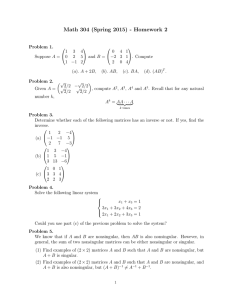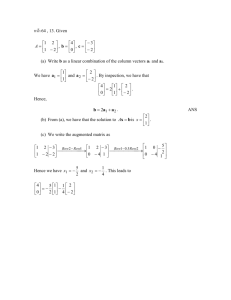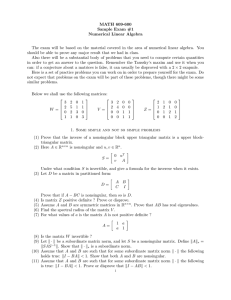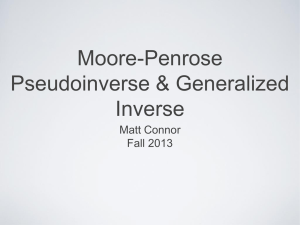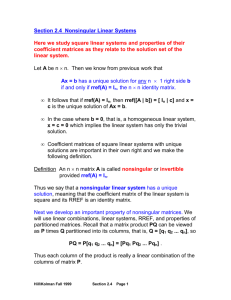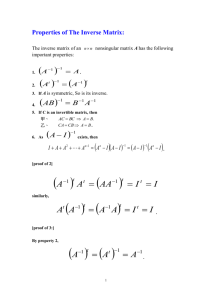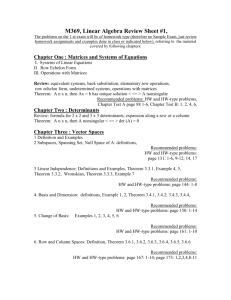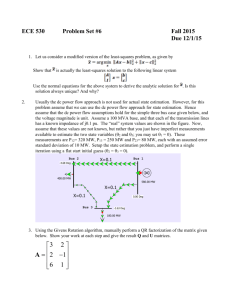Ex_2
advertisement
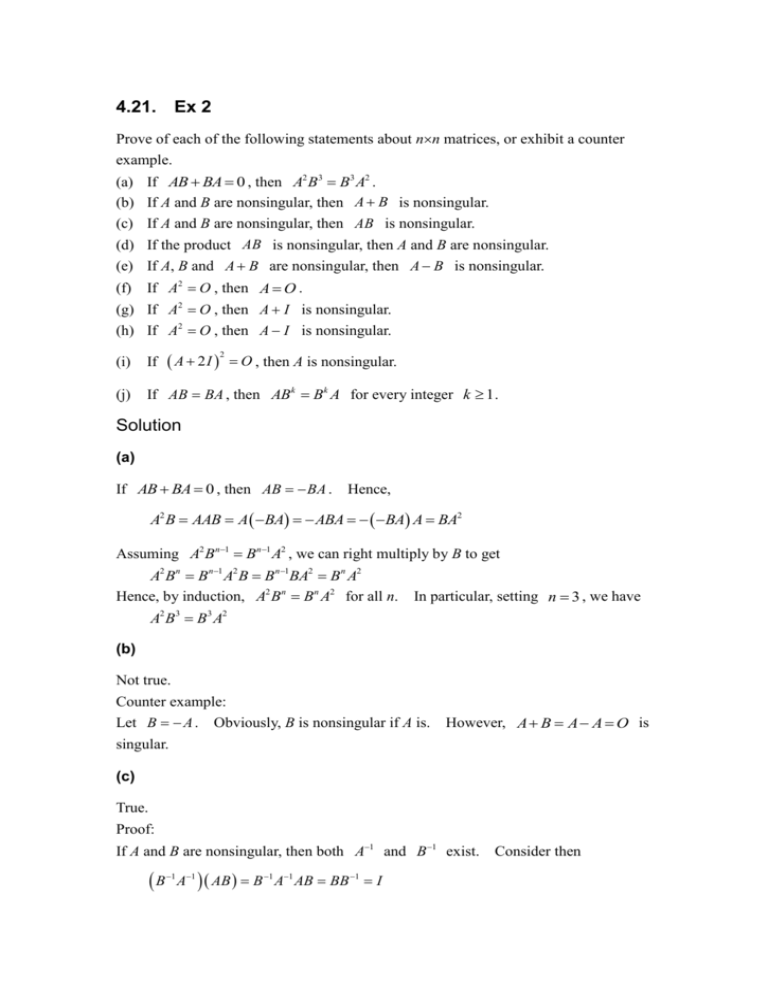
4.21. Ex 2 Prove of each of the following statements about nn matrices, or exhibit a counter example. (a) (b) (c) (d) (e) If AB BA 0 , then A2 B3 B3 A2 . If A and B are nonsingular, then A B is nonsingular. If A and B are nonsingular, then AB is nonsingular. If the product AB is nonsingular, then A and B are nonsingular. If A, B and A B are nonsingular, then A B is nonsingular. (f) If A2 O , then A O . (g) If A2 O , then A I is nonsingular. (h) If A2 O , then A I is nonsingular. A 2I 2 O , then A is nonsingular. (i) If (j) If AB BA , then ABk Bk A for every integer k 1 . Solution (a) If AB BA 0 , then AB BA . Hence, A2 B AAB A BA ABA BA A BA2 Assuming A2 Bn1 Bn1 A2 , we can right multiply by B to get A2 Bn Bn1 A2 B Bn1BA2 B n A2 Hence, by induction, A2 B n B n A2 for all n. In particular, setting n 3 , we have AB B A 2 3 3 2 (b) Not true. Counter example: Let B A . Obviously, B is nonsingular if A is. However, A B A A O is singular. (c) True. Proof: If A and B are nonsingular, then both A1 and B 1 exist. Consider then B 1 A1 AB B 1 A1 AB BB 1 I Hence, B 1 A1 is the left inverse of AB. AB. Hence AB is nonsingular. By theorem 4.20, it is also the inverse of (d) True. Proof: If the product AB is nonsingular, then I AB Hence, AB 1 1 AB AB 1 AB 1 exists so that A B A is the inverse of B so that B is nonsingular. argument to I AB AB , we see that B AB 1 1 Appying the same is the inverse of A so that A is nonsingular. (e) Statement is false. Counter example: Let A B be nonsingular. Thus A1 B 1 exists. Thus, the inverse of A B 2 A exists and equal to 1 1 A . 2 Hence A B is nonsingular. But A B A A O is obviously singular. (f) Statement is false. Counter example: a b Consider a 2 2 matrix A . The condition A2 O requires c d a 2 bc 0 ab bd 0 bc d 2 0 ca dc 0 Only 2 of these equations are independent: bc a 2 and (1) a d Thus, any A O with elements satisfying (1) will satisfy A2 O . One example is 4 10 A 25 10 Note that A O must be singular since if A1 exists, then A2 O implies A1 A2 A1O AO (g) Consider the identity I A A I I A2 Hence, if A2 O , then I A is the left inverse of A I . By theorem 4.20, A I is nonsingular. (h) Consider the identity A 2 A I A I A3 I Hence, if A3 O , then A2 A I is the left inverse of A I . By theorem 4.20, A I is nonsingular. (i) A 2I 2 O implies A2 4 A 4 I O (1) 1 Assuming A exists, then A1 (1) gives A 4 I 4 A1 O or A1 1 A 4I 4 (2) Thus, by construction according to (2), A1 indeed exists so that A is nonsingular. (j) We shall prove it by induction. The case n 1, or AB BA , is given. Assuming AB k 1 B k 1 A , we can right multiply by B to get ABk Bk 1 AB Bk 1BA Bk A QED.
